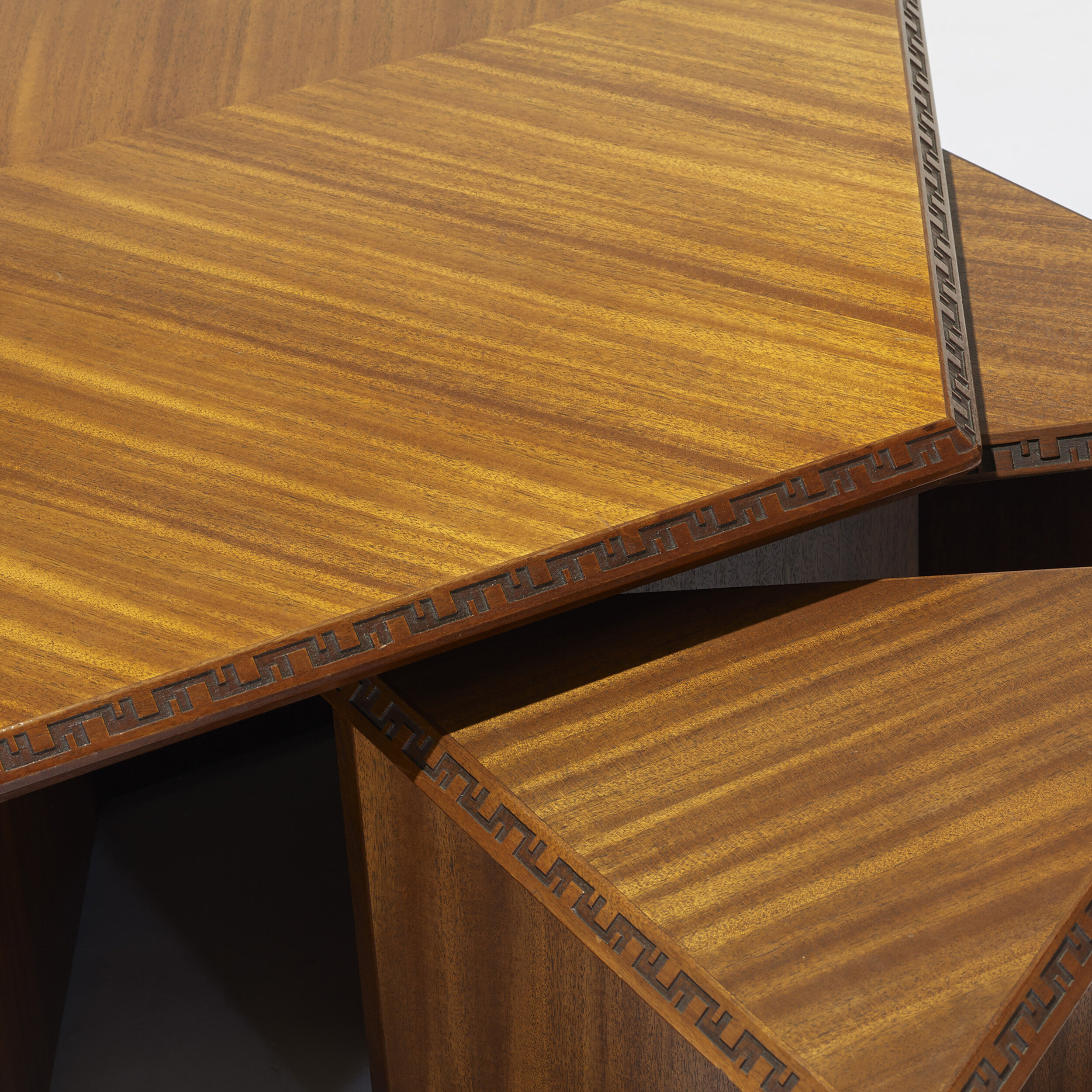Frank Lloyd Wright's Furniture and the Timeless Appeal of Pure Geometry
After a decades-long career of highs and lows, Frank Lloyd Wright became America’s most famous architect in the 1950s. He was the first “starchitect” in American history – landing on the cover of Time Magazine and featured, somehow, on the TV game show “To Tell the Truth.”
In addition to creating dozens of iconic structures like the Price Tower in Oklahoma and the Guggenheim Museum in New York, Wright found time to design a line of furniture for the Heritage Henredon company. One of those designs, a coffee table and six matching stools, is pictured here.
Even now, decades after its creation, it is stunning: graceful, warm, and refined. Somehow it seems simultaneously ancient and modern. But what makes this design work so well?
The elegantly simple forms are a tribute to the organizing power of geometry: The table is a perfect hexagon suspended on six perpendicular planes, which function as the table’s legs. The table’s hexagon shape is subdivided into six equilateral triangles to form the stools. Each stool sits on three legs that radiate from the triangle’s center.
Wright, like artists predating him by centuries (Vitruvius, Leonardo) recognized the extraordinary power of geometry in design. Universal geometric shapes like squares, circles and triangles transcend cultures and time periods. Geometric forms are not just the basis for Wright’s furniture designs, they form the foundation of his entire architectural oeuvre.
Architectural styles such as “Colonial” and “Victorian” come and go because they are fashion. They are fleeting. Many houses built as recently as the 1990s now look awkward and ugly. But Wright’s works from the 1930s, like his masterpiece Fallingwater, still look dazzingly modern. Because Wright’s forms are based on pure geometric forms, they will never look old. A circle will always be a circle, and an equilateral triangle will be a part of our reality 1,000 years from now.
And what about our table and stools set? At its core, this superb design is essentially just a group of triangles made of wood. But what a powerful statement it makes. It will always be beautiful and it will never go out of style. Because trends come and go, but geometry is forever.
Furniture images from Wright20 auctions in Chicago. In 2013, this Heritage Henredon grouping was sold at auction for $16,200.




